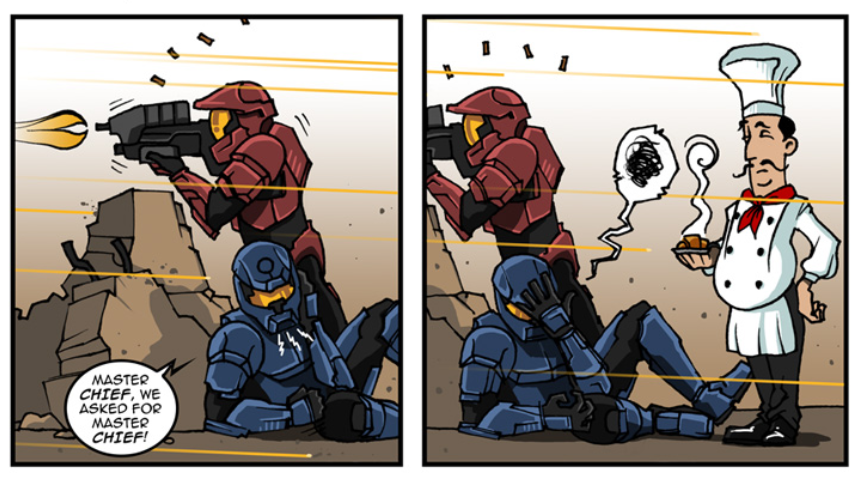According to the 2015 Standish Group Chaos Report, only 29% of projects were deemed successful while 19% of them failed. The situation hasn t changed much over the years.
As the success of software projects become ever more critical in many industries today, IT leaders need to find ways of ensuring project success.

While there may be many reasons why one project might fail, I want to concentrate on one particular area COMMUNICATION.
Inadequate or poor communication is the primary cause of failure in almost one-third of projects (29%) source: Pulse of the profession 2018
Ironically, we live in a world of social networks and digital communication tools, and the information around us circles at tremendous speed but the problem of communication prevails.
One might pose a valid hypothesis:
by fixing and improving the communication, organizations can run more effectively and get ahead of those that don’t improve their communication.
In theory yes but in reality, things are not that simple because good communication is the combination of skills, technology, and organizational mindset change. The mindset change is considered the most important and critical factor.
An organization can have the best tools and employ the best soft skills trainers, but if mindset shift doesn t occur, poor communication threatens to destroy everything.
What can we do to fix the communication and to keep it on the right track of the success road?
Like everything else, fixing a problem starts with admitting you have one in the first place. This shouldn t be too hard since poor communication is a leading cause of failed projects ignorance will lead you to doom.
We ve admitted. Whats next?
Limit the number of communication channels in use.
With the technology advancement and especially in software development industry, where we simply love new cool collaboration tools that come out, organizations fall into a trap. The communication disperses over too many communication channels emails, Skype, Slack, Flock, Microsoft Teams, sticky notes, cool new collaboration tool, etc.
People are communicating so what is the problem? While the communication part holds ground, we must understand the fact that information spread across too many channels is hard to keep track of.
Also, you can t expect all your team members to keep track of all those channels and stay on top of every piece of information while they have to concentrate on their primary job.
A proposed solution is to pick one channel or two and stick with them.
Make this pick early on, clearly communicate it to the whole team at the
kick-off meeting and in project working agreement, and as soon as someone sends an update via a different channel, remind them to do it again, but
over a previously agreed channel. Don t make exceptions.
Use email only for important project details.
This part is partially related to the previous one. While the email brought revolution to the way people communicate, and they are great for super important project details such as milestones, dates, documentation, and other relevant, official, documentation, emails are hard and slow to browse, filter and manage. It s a daunting task to find some project detail among thousand emails and different threads.
While emails should remain a go-to tool for precise project details and one time messages to large groups, they are just not suitable for ongoing project collaboration and everyday project communication shouldn’t be done using them.
Instead, project management software like Jira, Trello, Assemla etc. should be used to communicate timelines, status updates, documentation, – and specific collaboration tools like Slack or MS Teams for everyday communication.
Don’t call for a meeting unless it s essential.
We experience this one a lot, don’t we?
People tend to drift towards too many meetings, even over making a simple decision that could have been made over email. One might argue that more meetings equal better communication, but let s face it, how many times you realized that a meeting didn’t produce the desired result? Also, did you notice any relation to the number of people present? As soon as there are more than 4 participants, meetings tend to drift in a wrong way.
So, next time, before you schedule a meeting, consider if that meeting could be an email? Or maybe a simple 5-minute chat over morning tea? In other words, ask yourself if you can improve the communication by conveying this information in a brief message and save everyone s time instead of dragging them into a conference room and stopping their productivity?
While managers need a meeting to discuss plans and strategies, developers need uninterrupted time to focus and create. So, the fewer meetings, the better. Be productive and efficient when conveying information.
Identify a single, trusted information source.
The more leadership voices you have on a project, the higher likelihood of paths getting crossed. The information easily gets twisted, and you end up with many versions of the same thing. Who to believe then?
Identify and choose a project lead and stick to them and their word. It s the leader s responsibility to give the right information. While contribution from the whole team is essential, and open dialogue and disagreement critical, project lead needs to guide discussions and break the deadlocks to make final decisions.
Connect the distributed teams right
Distributed teams became a common phenomena in a world of software development where organisations partner up with vendor companies to help with their work or to take their game to the next level.
Having a pool of experts at hand will definitely result in a successful and on time product, but if, and only if the above communication suggestions are applied.
While we covered the Challenges of working with distributed teamsin one of our previous articles, here I will summarize the above advised practices to keep in mind in regards to the communication challenge:
Collaboration tools are essential for distributed teams no matter what time zone one is in. They are effective, and even fun, which is important in regards to keeping up a good team spirit. These tools, such as MS Teams and Slack, allow secure file sharing, discussions and collaboration on essential projects topics.
Follow that up with the right project management tool for tasks tracking (Jira, Trello, Assemla..), and you are set for success. No more different, specific tools for calls, team meetings, presentations, status updates and everyday chat. Instead, use a single tool that enables all of that and stick to it with no exception.
At Maestral Solutions, we work diligently on eliminating waste, and we focus on essential aspects of communication. We ve been working across globe with many distributed teams for over 10 years now, so if you have any questions or comments, let us know in the comment section below. Thank you for reading!
Image Source: medium.com
